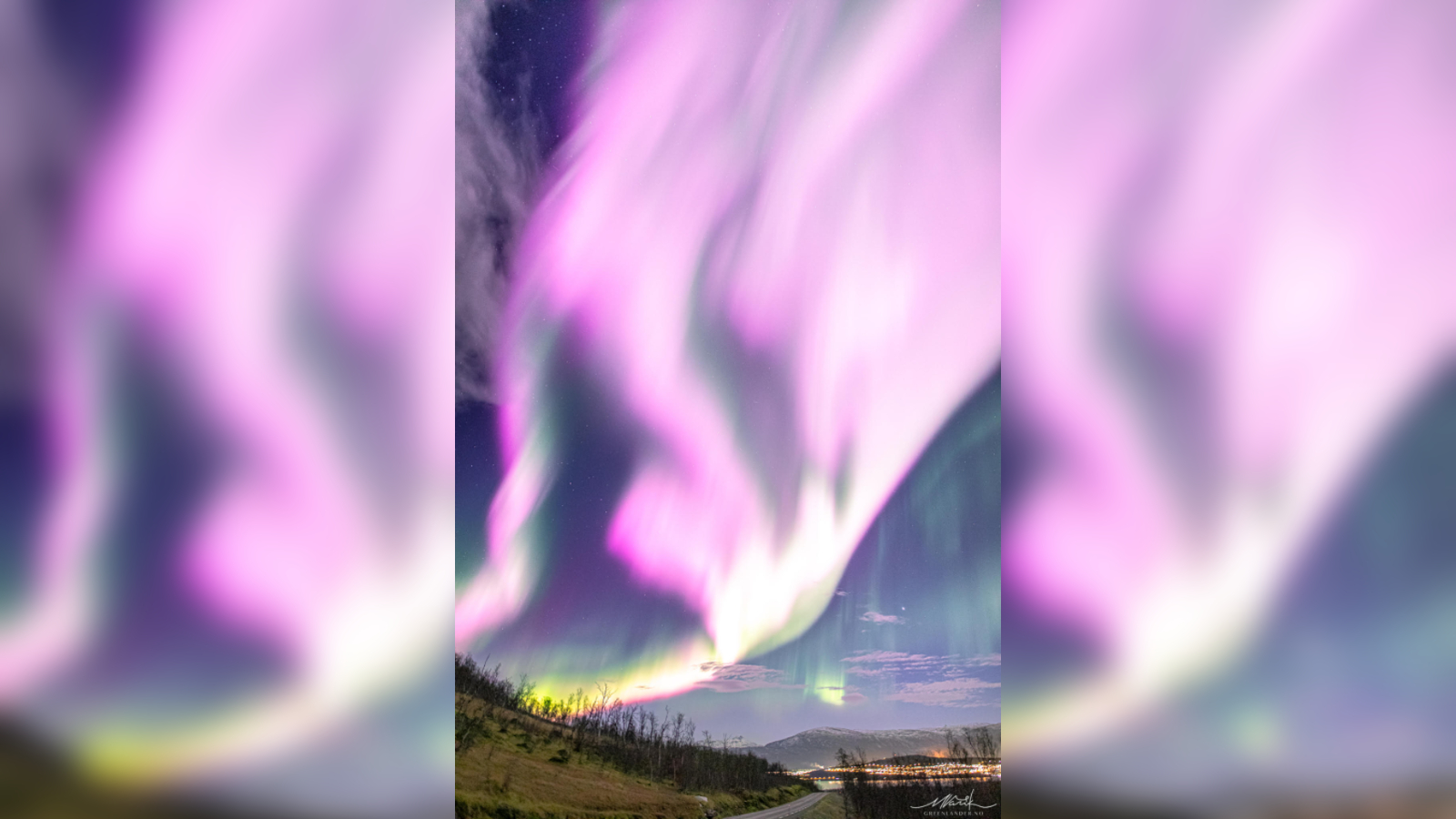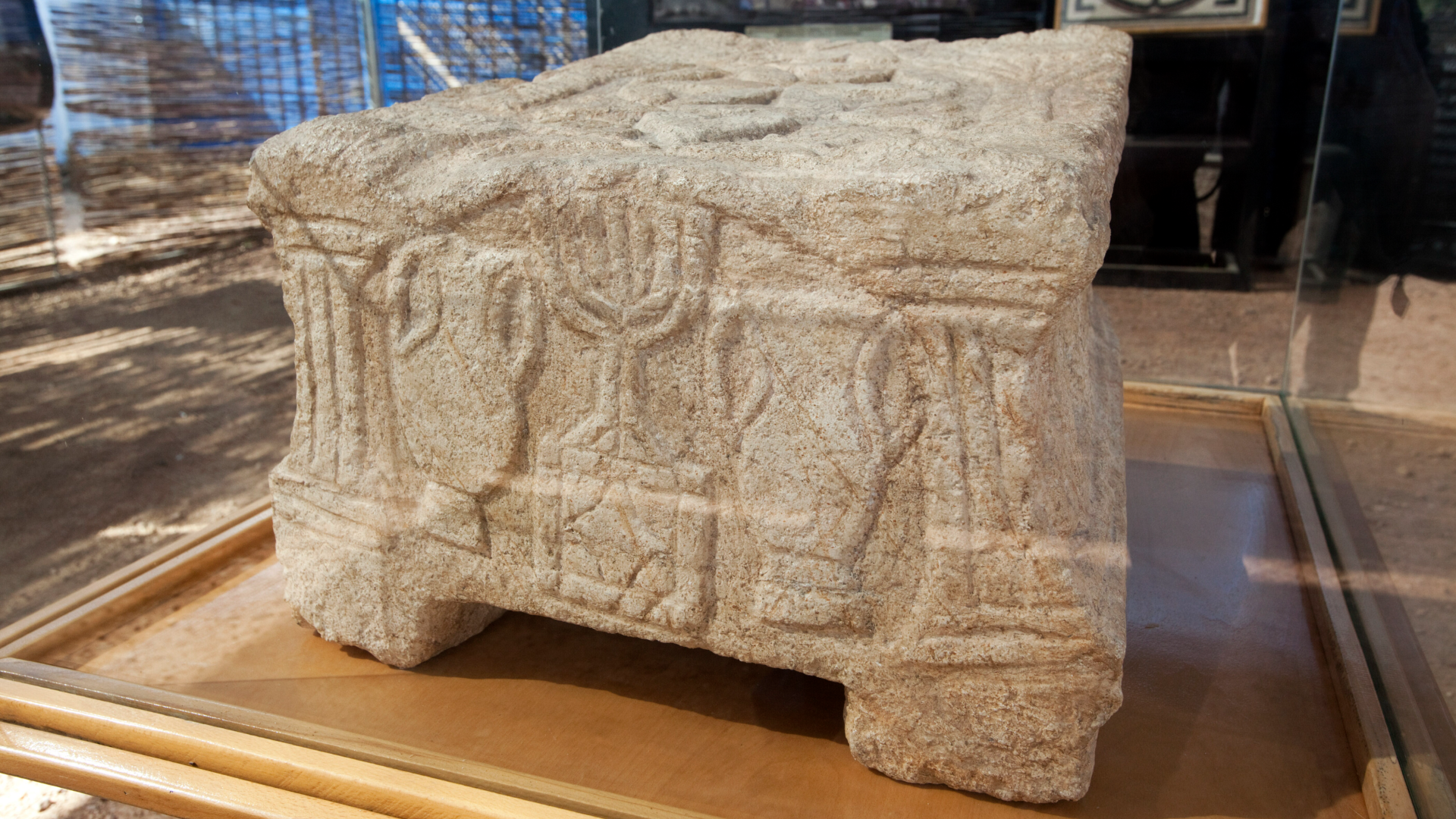Solar storm smashes hole in Earth's magnetosphere, triggering extremely rare pink auroras
On Nov. 3, a solar storm caused a temporary crack in Earth's magnetic field. The resulting hole enabled energetic particles to penetrate deep into the planet's atmosphere and set off extremely rare pink auroras.
An explosion of extremely rare pink auroras recently lit up the night sky above Norway after a solar storm slammed into Earth and ripped a hole in the planet's magnetic field. The breach enabled highly energetic solar particles to penetrate deeper into the atmosphere than normal, triggering the unusual colored lights.
The stunning light show was spotted Nov. 3 by a tour group led by Markus Varik, a northern lights tour guide from the Greenlander tour company based near Tromsø in Norway. The vibrant auroras emerged at around 6 p.m. local time and lasted for around 2 minutes, Varik told Live Science in an email.
"These were the strongest pink auroras I have seen in more than a decade of leading tours," Varik said. "It was a humbling experience."
The pink auroras emerged shortly after a small crack appeared in the magnetosphere — an invisible magnetic field surrounding Earth that is generated by the planet's fluid metal core. Scientists detected the breach after a minor G-1 class solar storm slammed into Earth on Nov. 3, according to Spaceweather.com.
Related: Do extraterrestrial auroras occur on other planets?
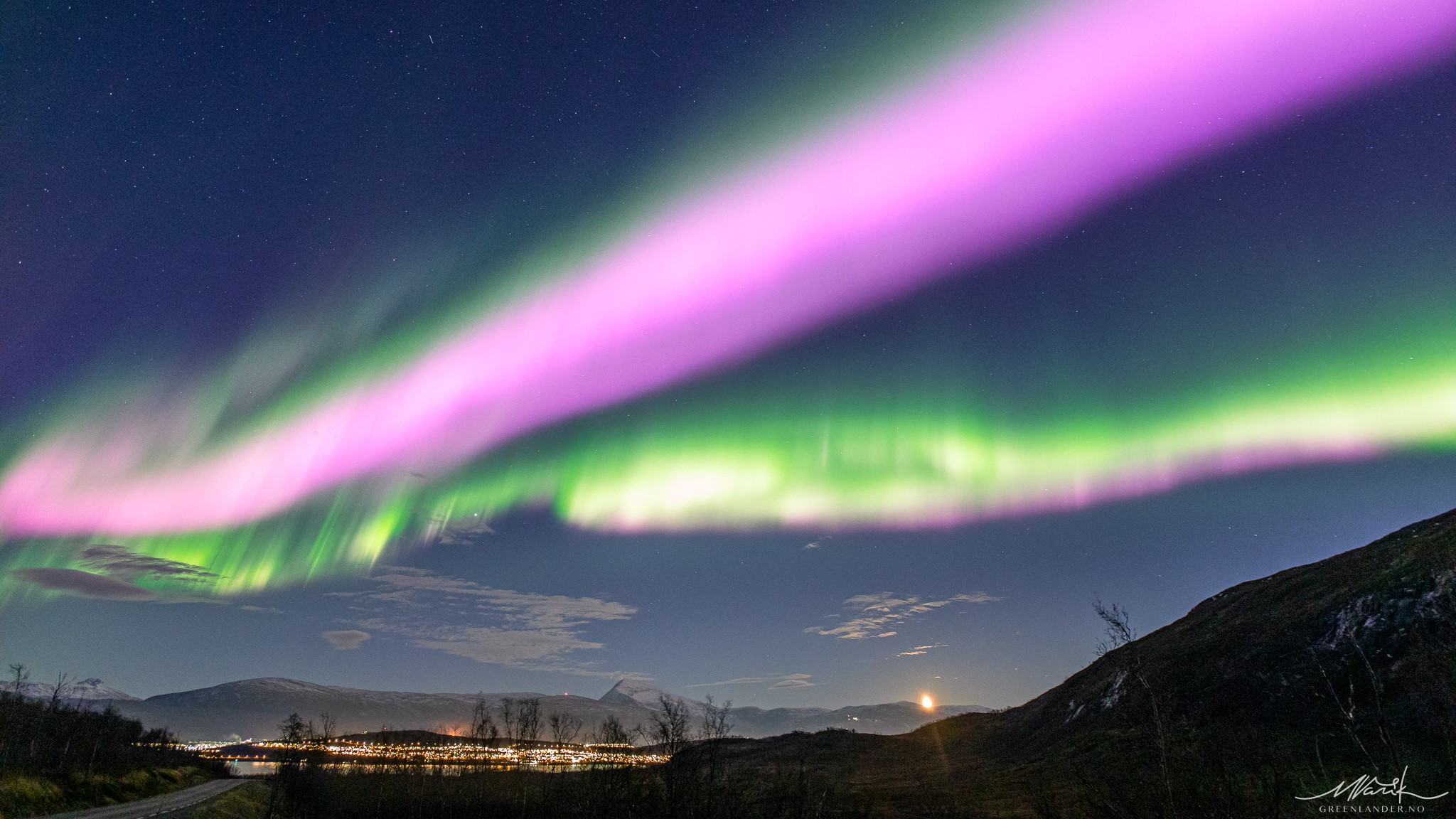
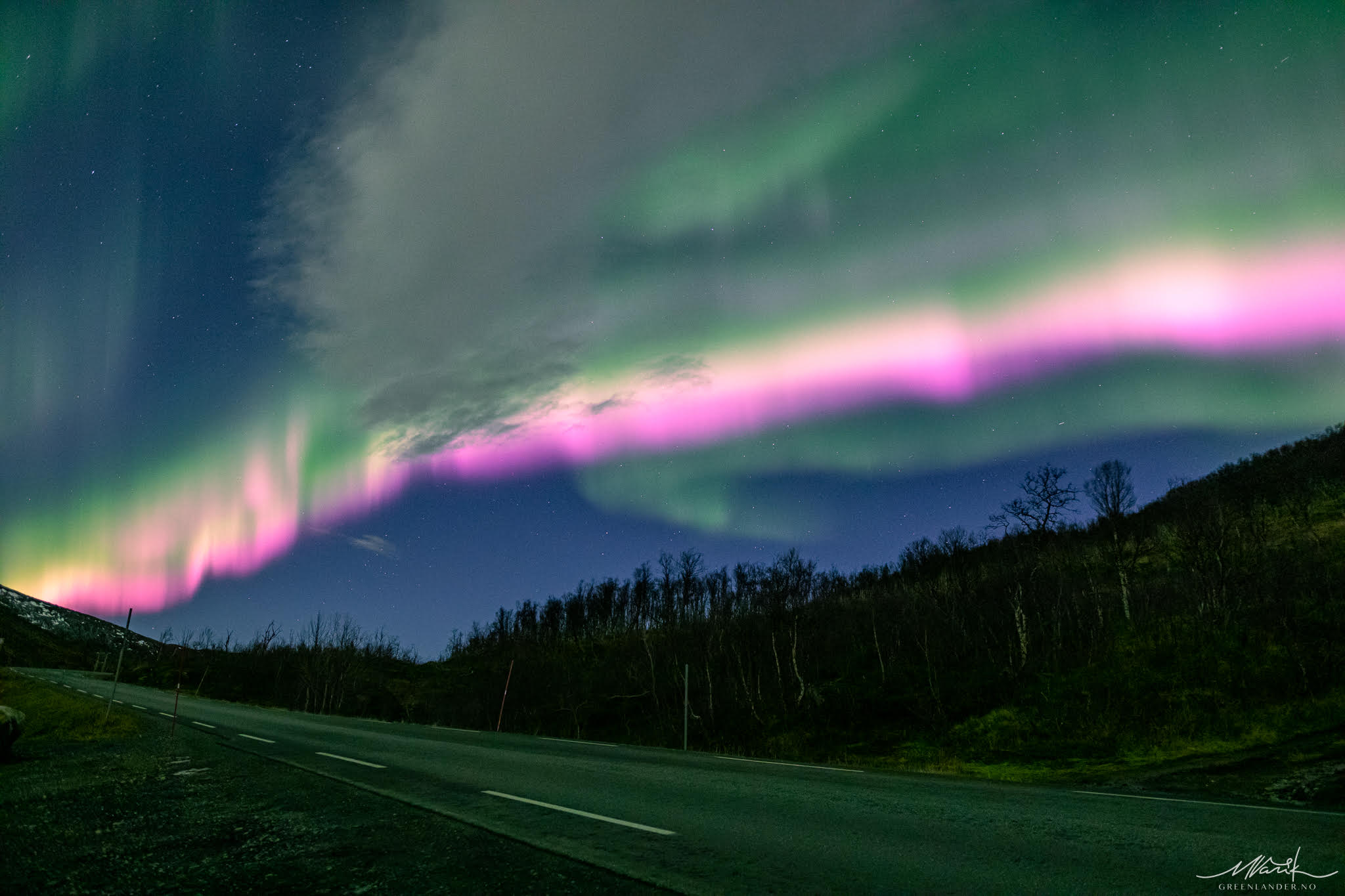
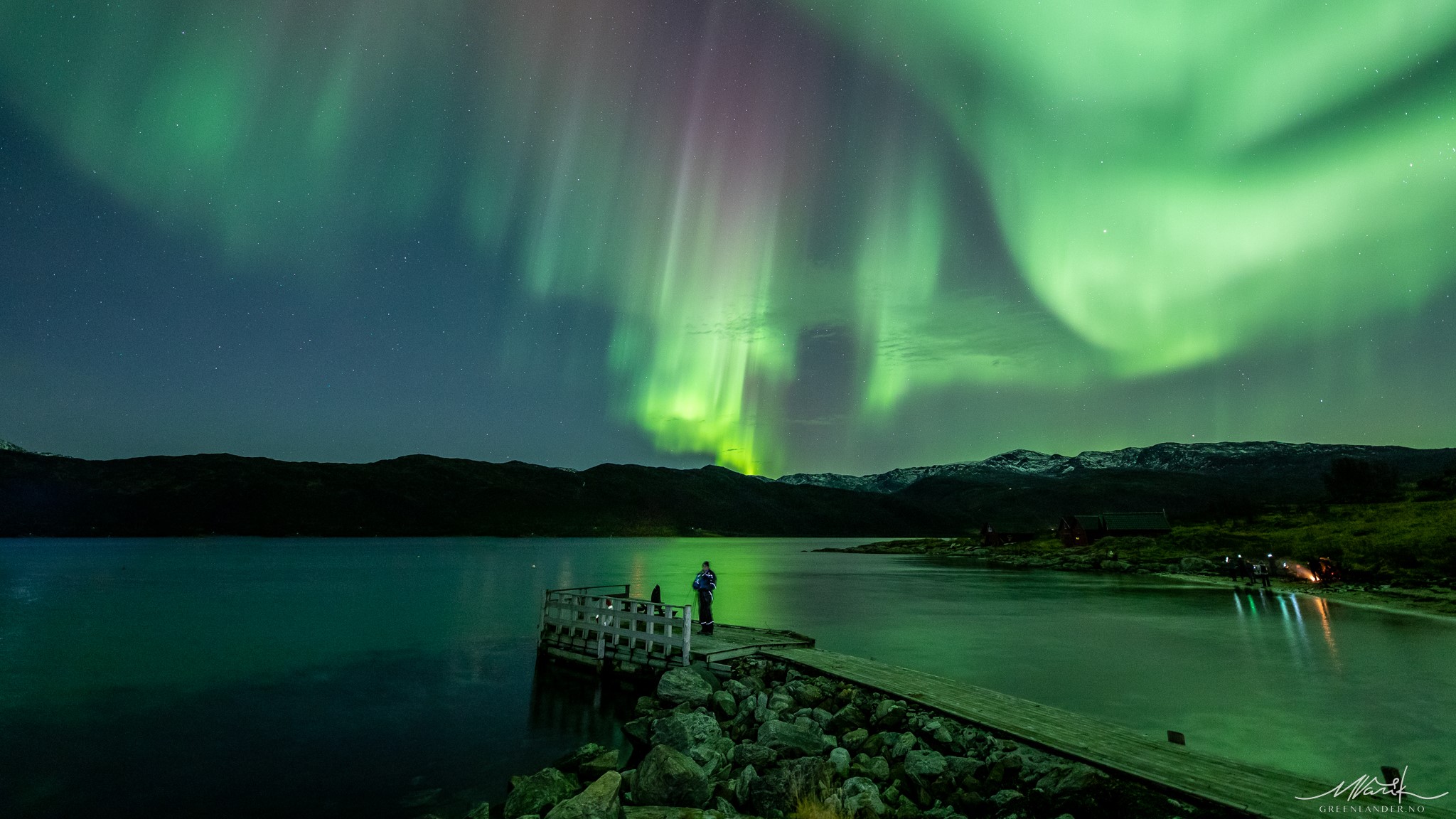
Auroras are formed when streams of highly energetic charged particles, known as solar wind, pass around the magnetosphere. The planet's magnetic field protects us from cosmic radiation, but the shield is naturally weaker at the North and South Poles, which enables the solar wind to skim through the atmosphere — usually between 62 and 186 miles (100 and 300 kilometers) above Earth's surface. As solar particles pass through the atmosphere, they superheat gases, which then vibrantly glow in the night sky, according to NASA.
Auroras most commonly appear green, because oxygen atoms, which are abundant in the part of the atmosphere that solar wind normally reaches, emit that hue when they are excited. However, during the recent solar storm, the crack in Earth's magnetosphere enabled the solar wind to penetrate below 62 miles, where nitrogen is the most abundant gas, according to Spaceweather.com. As a result, the auroras gave off a neon pink glow as the supercharged particles smashed mostly into nitrogen atoms.
Get the world’s most fascinating discoveries delivered straight to your inbox.
The crack in Earth's magnetosphere also helped to generate strong green auroras throughout the night, Varik said.
The magnetosphere hole closed around 6 hours after it first opened. During this time, a strange ribbon of blue light also emerged in the skies above Sweden, where it hung motionless in the sky for around 30 minutes, according to Spaceweather.com.
However, experts are unsure if this unusual phenomenon was some never-before-seen type of aurora caused by the compromised magnetosphere, or if it was the result of something else. One expert suggested that the ribbon could have been made up of frozen fuel from a Russian rocket, but no rockets were spotted in the area, according to Spaceweather.com.

Harry is a U.K.-based senior staff writer at Live Science. He studied marine biology at the University of Exeter before training to become a journalist. He covers a wide range of topics including space exploration, planetary science, space weather, climate change, animal behavior and paleontology. His recent work on the solar maximum won "best space submission" at the 2024 Aerospace Media Awards and was shortlisted in the "top scoop" category at the NCTJ Awards for Excellence in 2023. He also writes Live Science's weekly Earth from space series.


